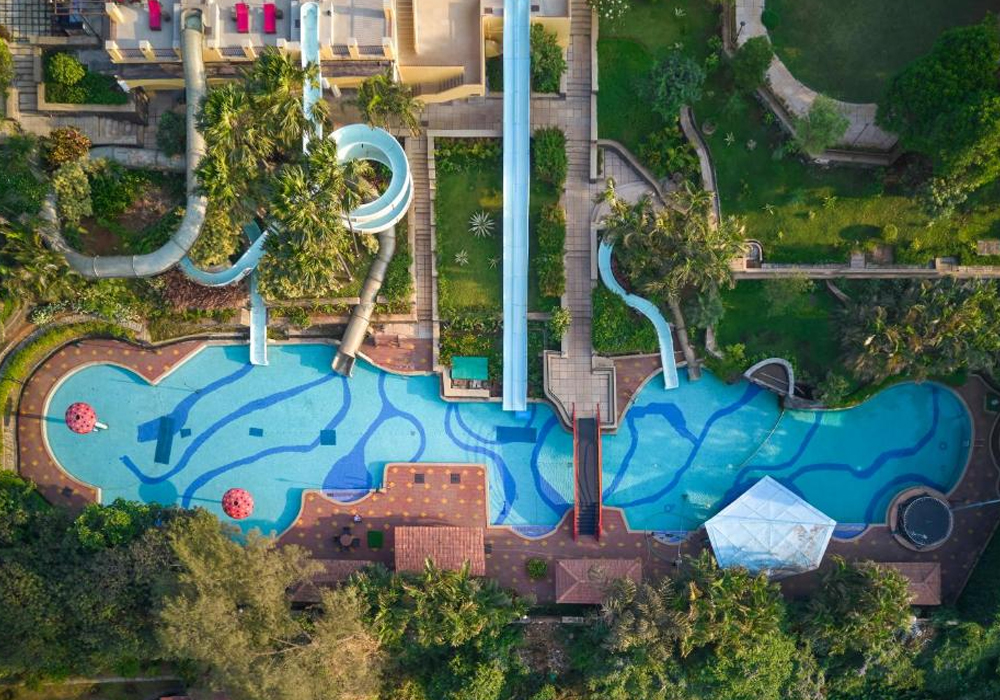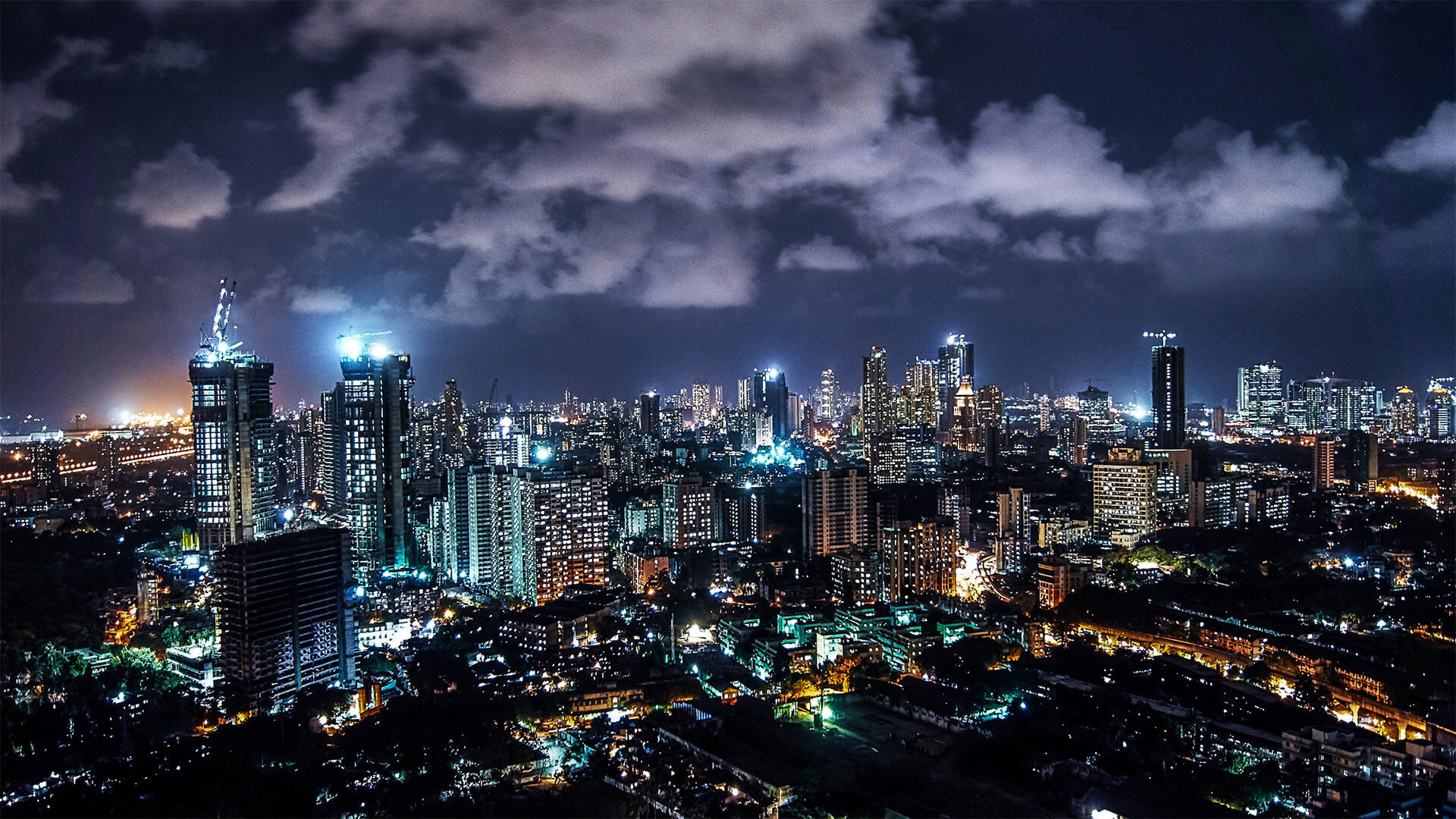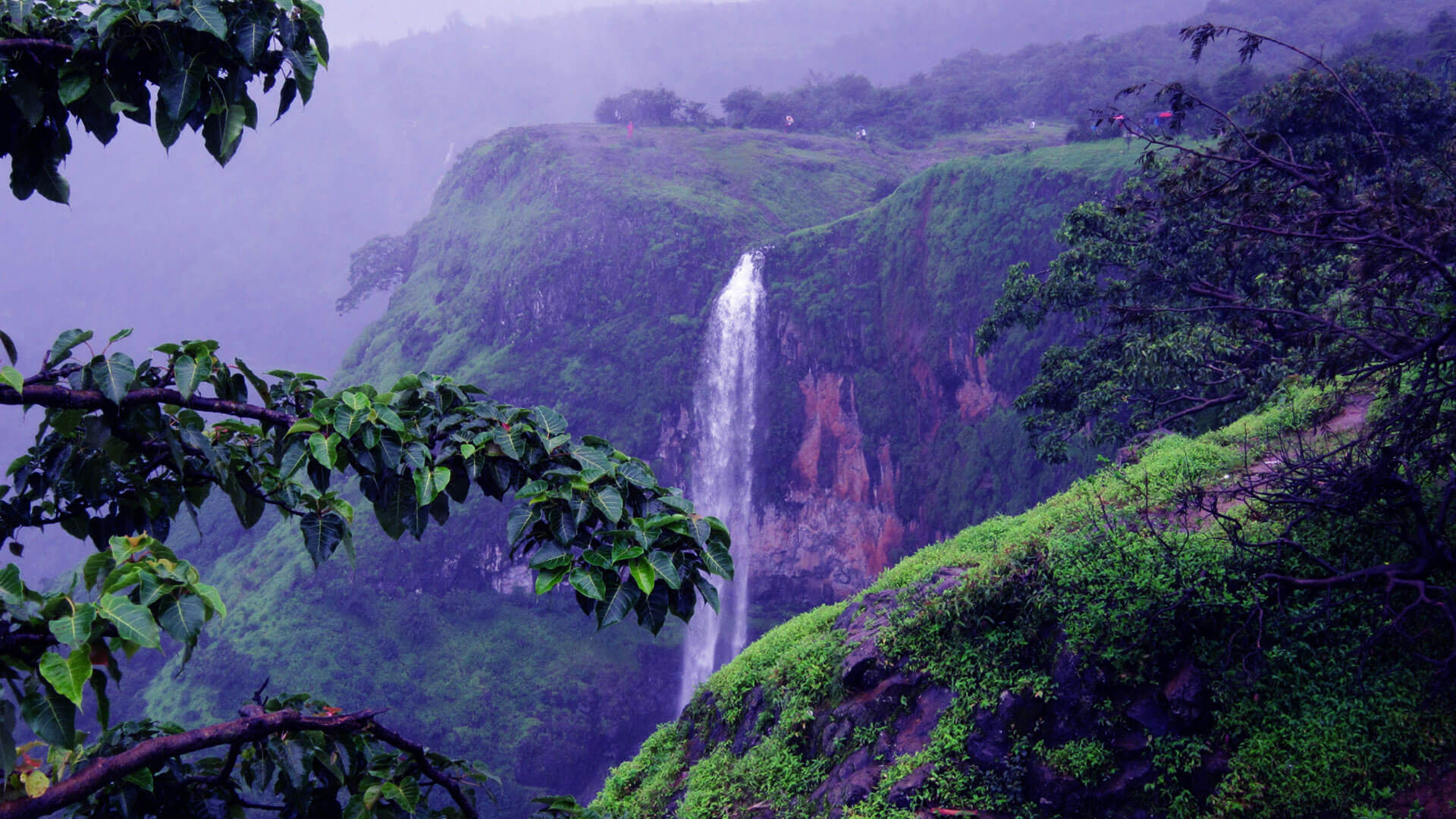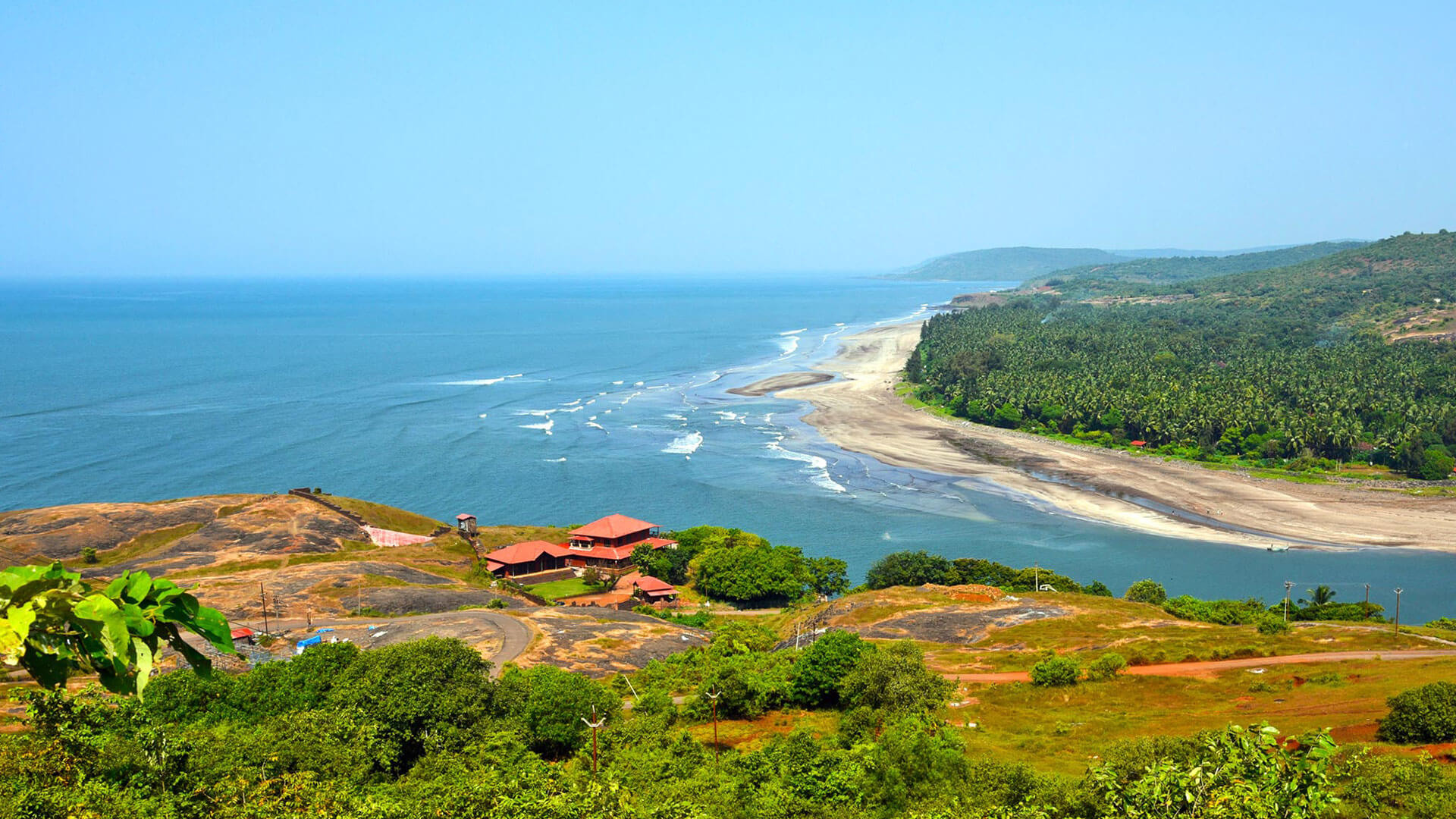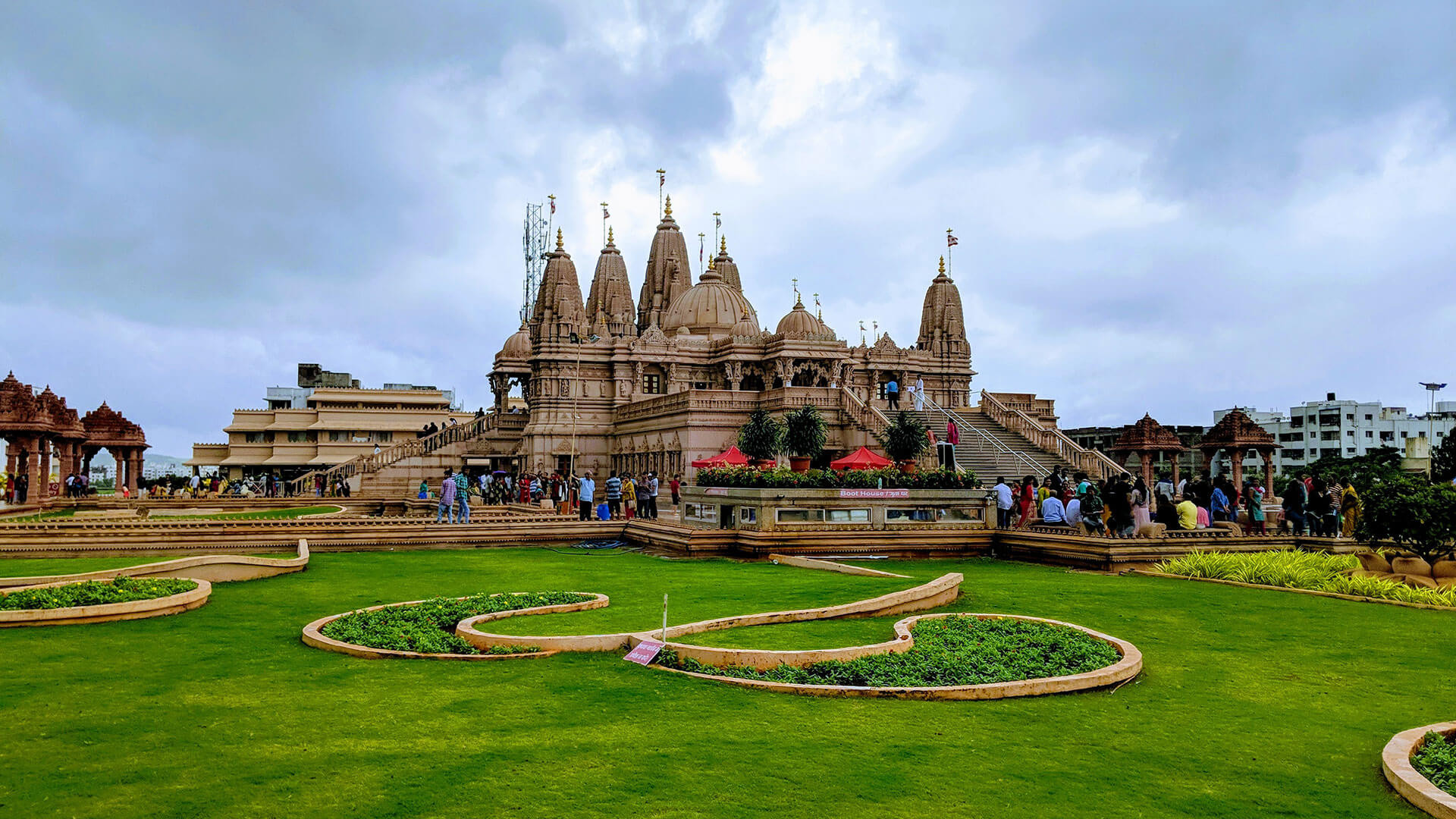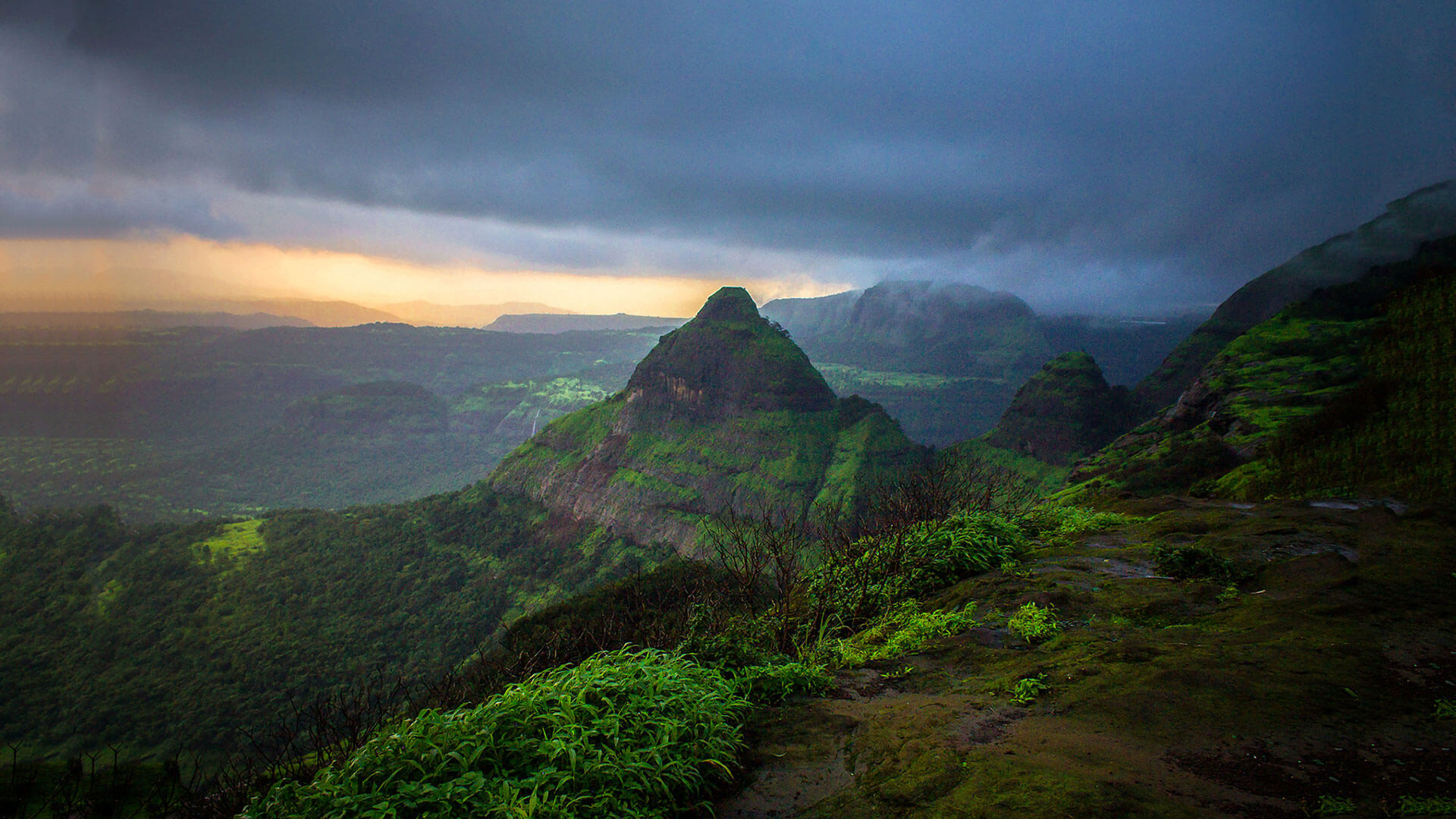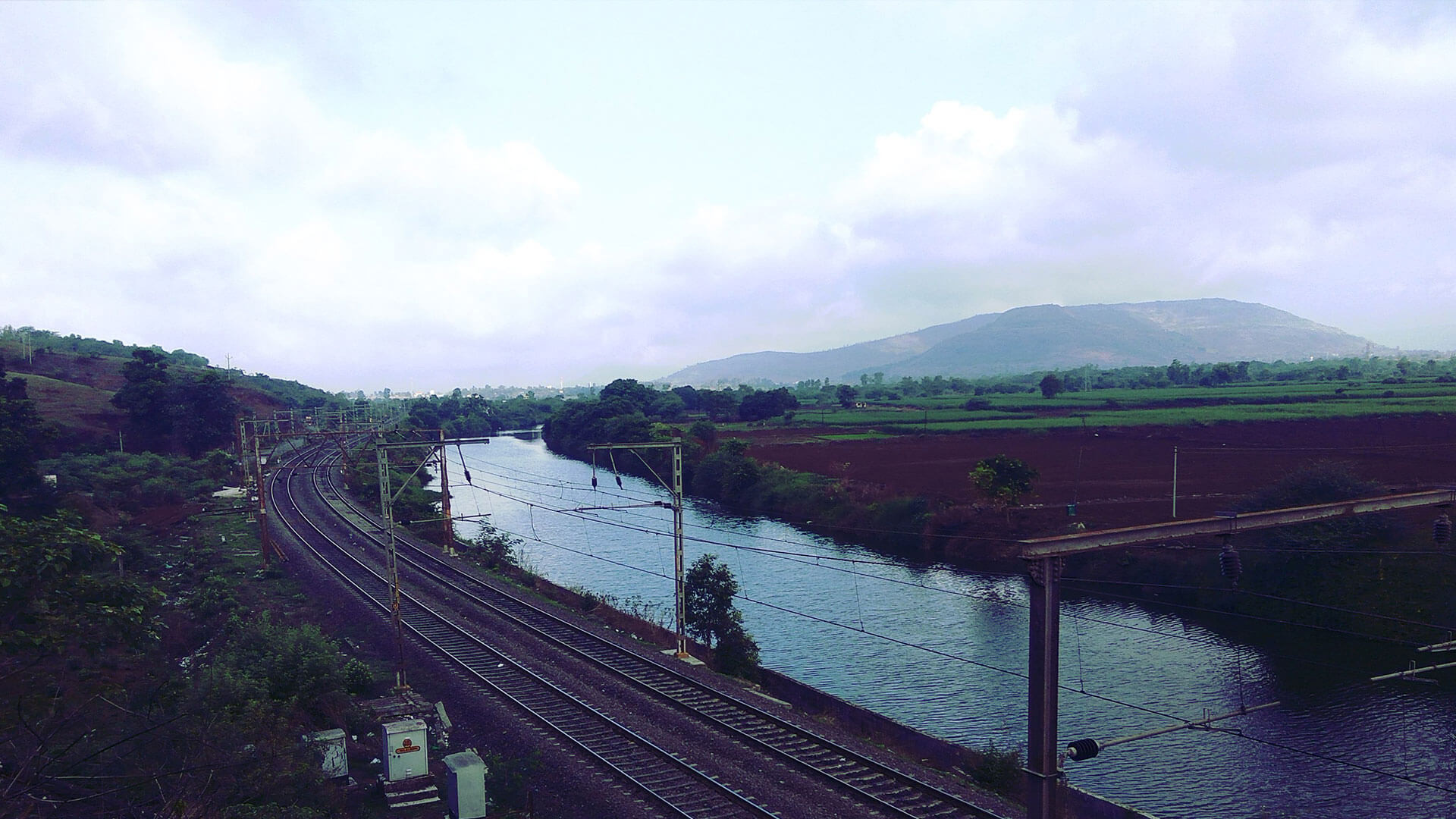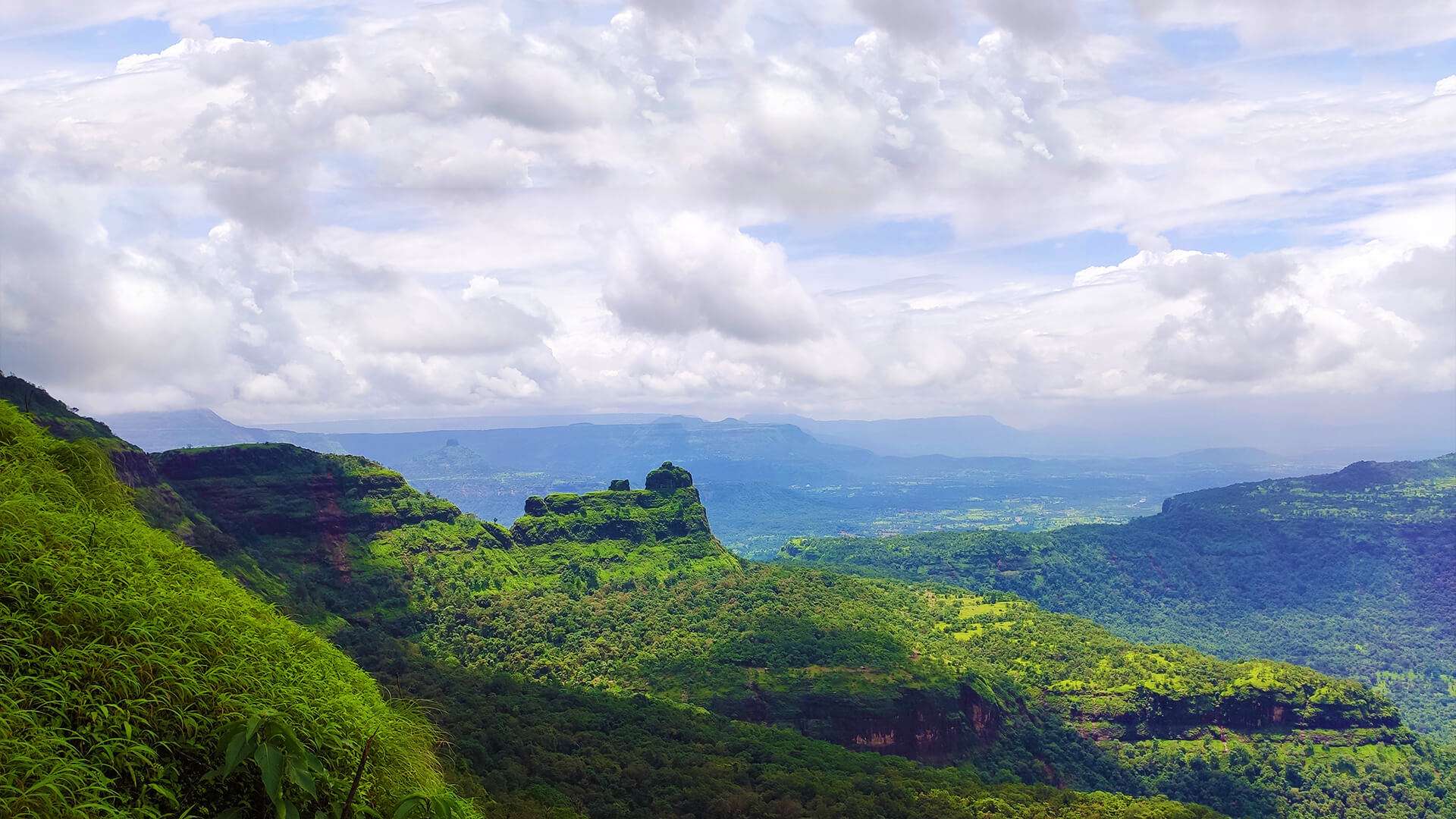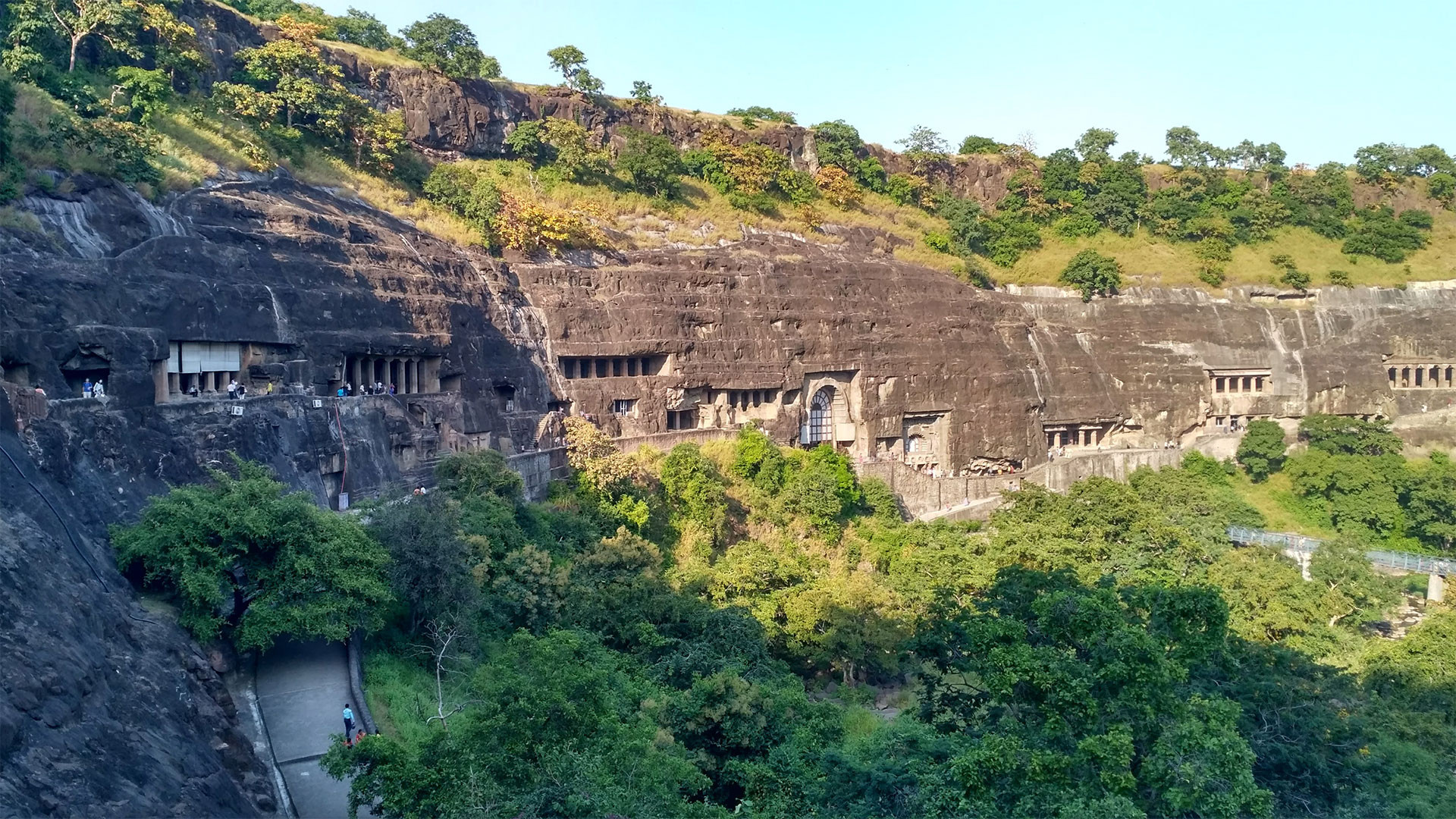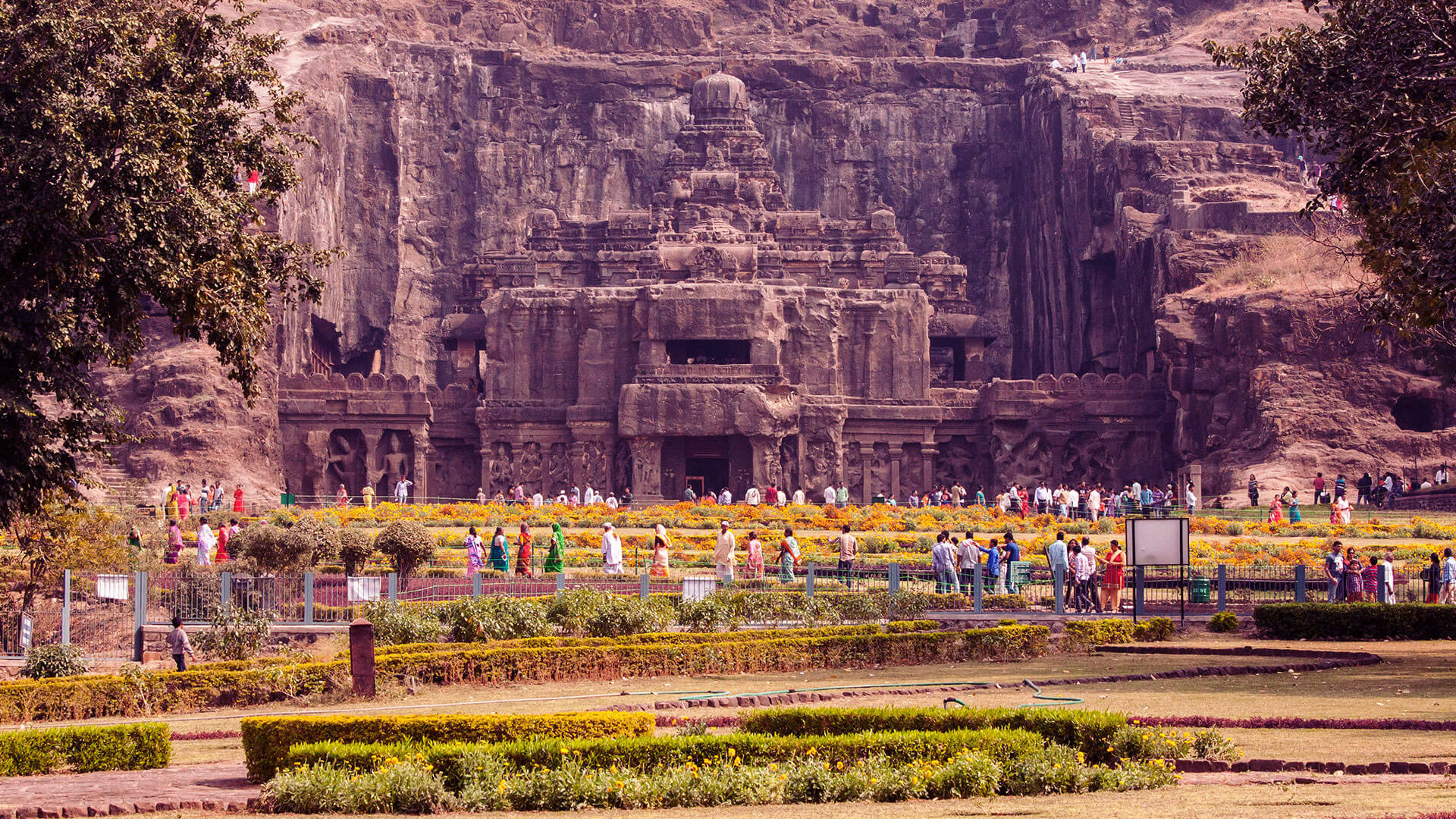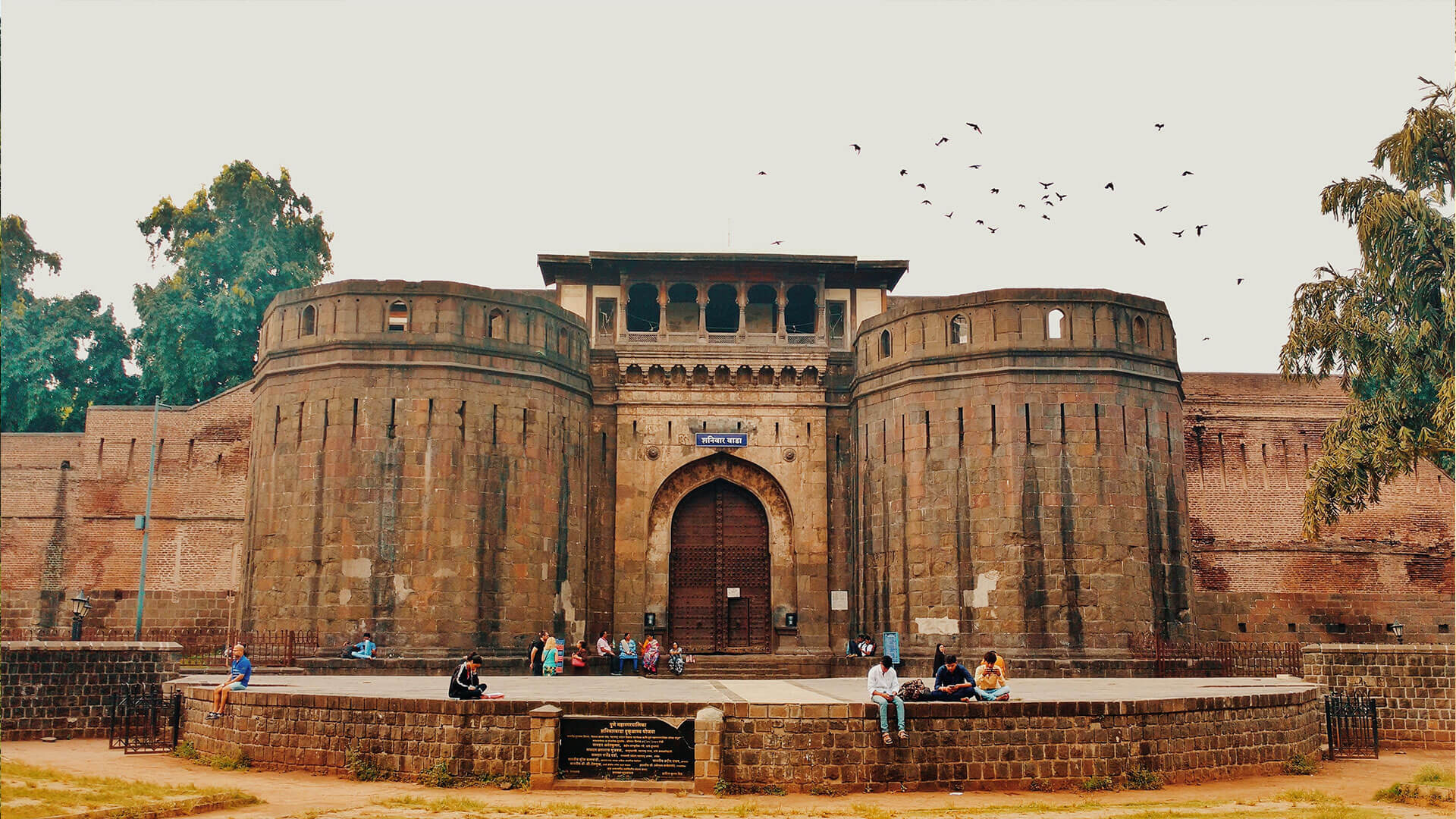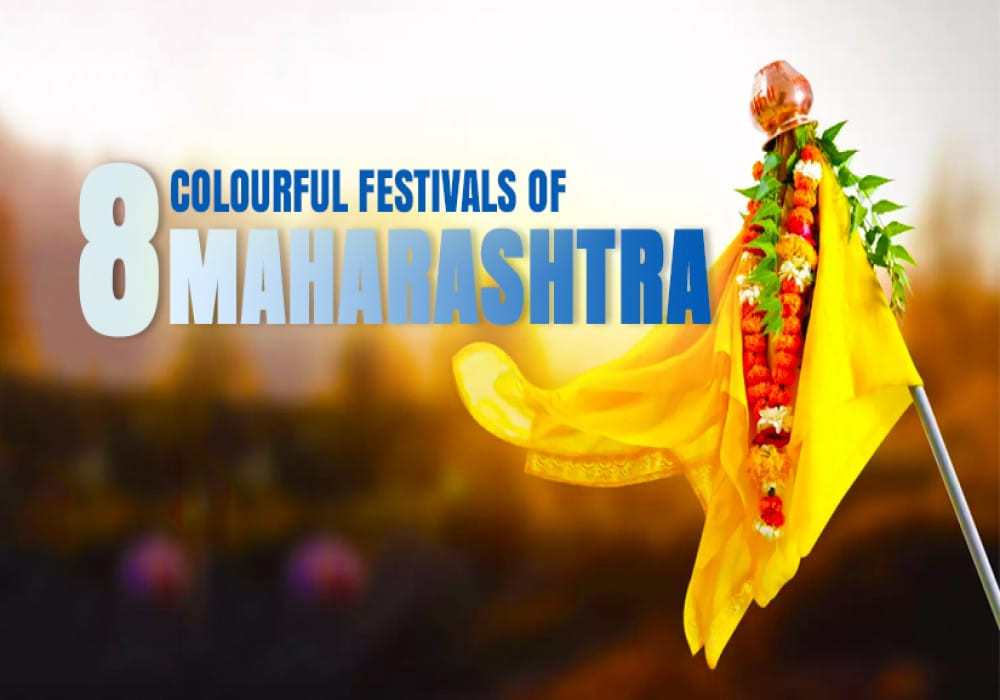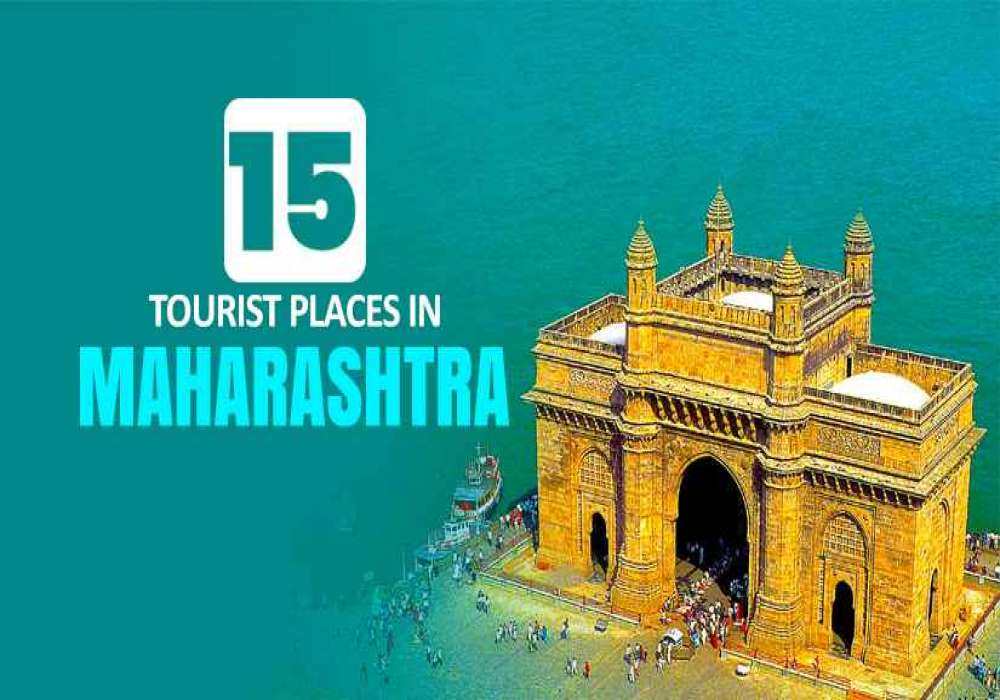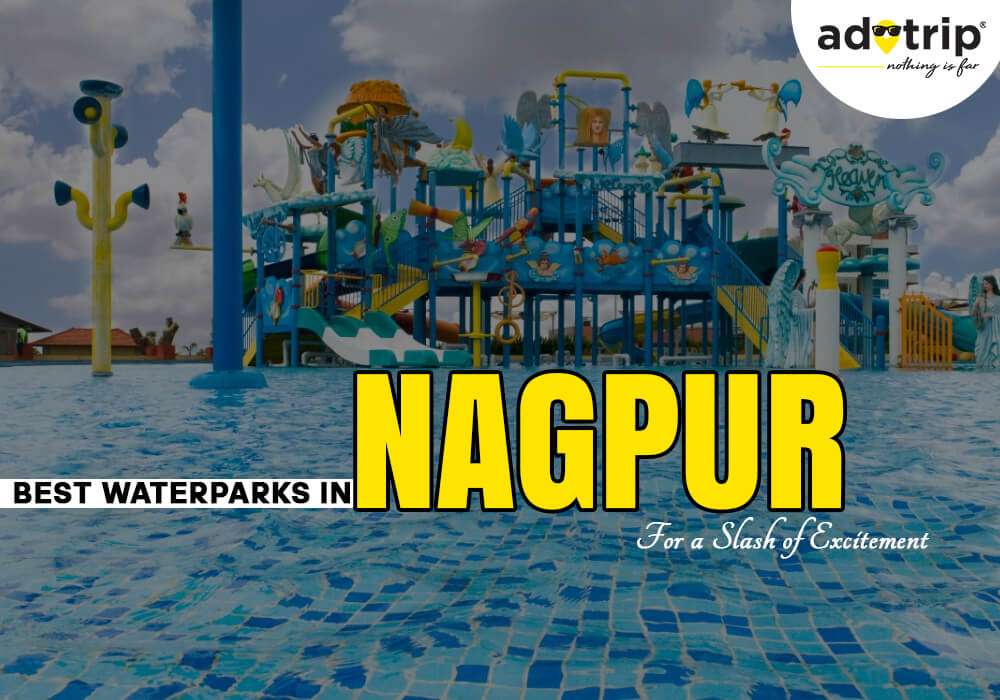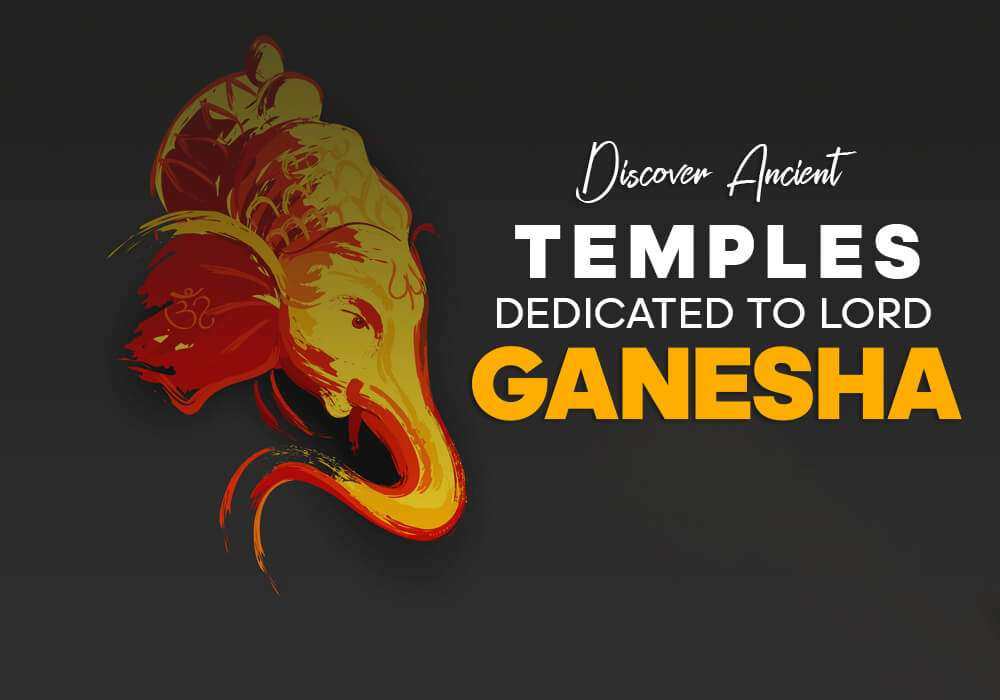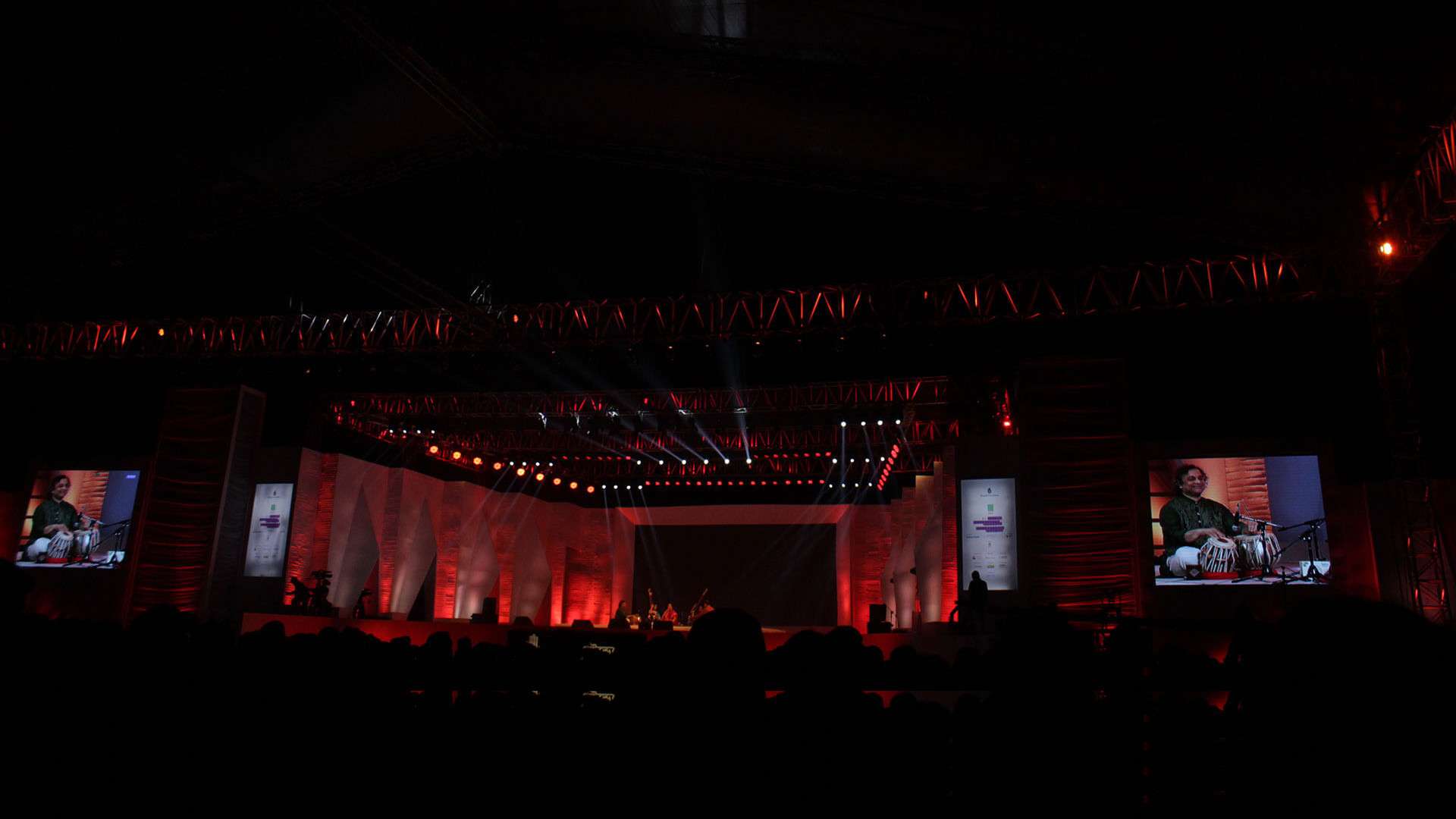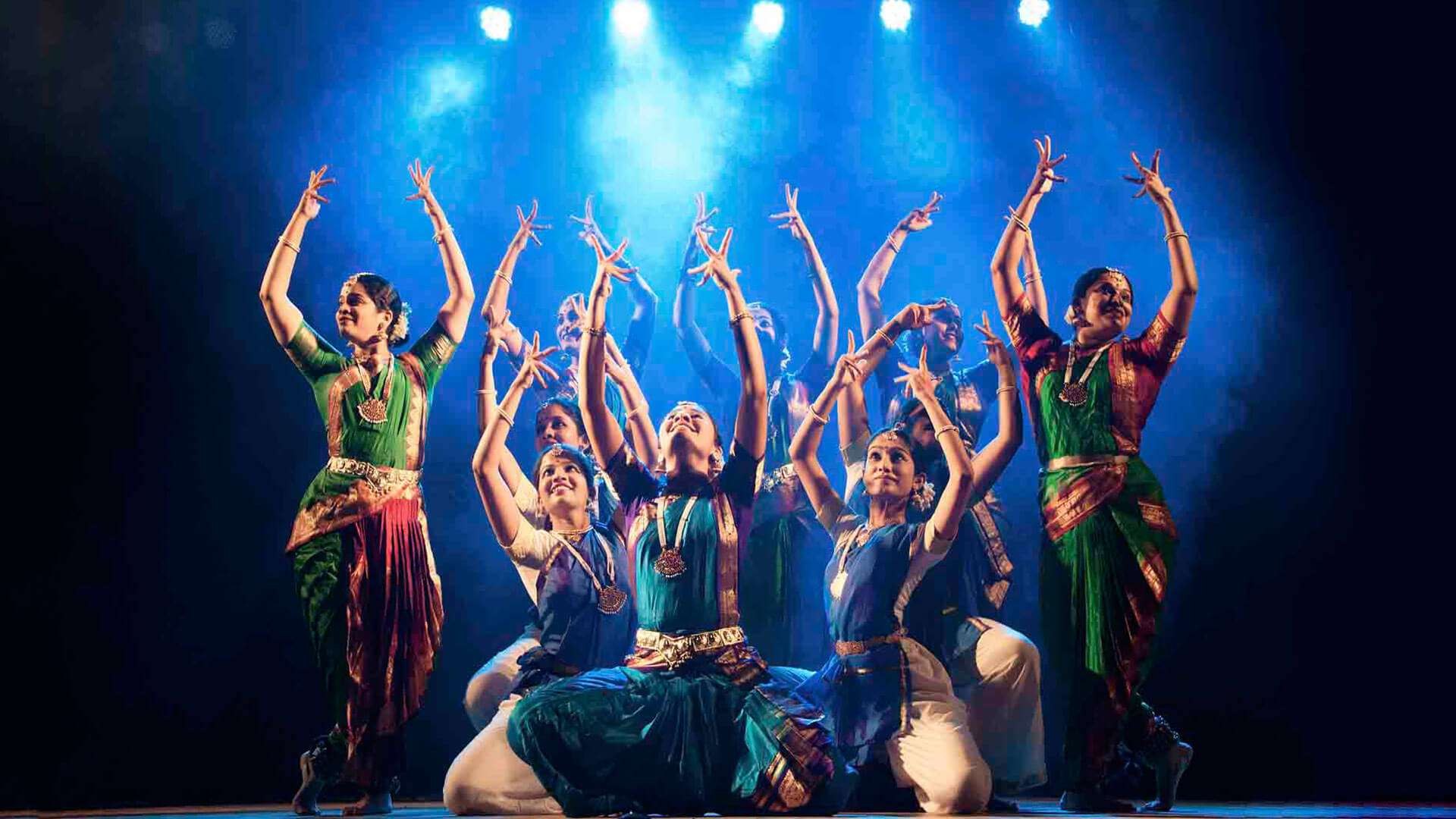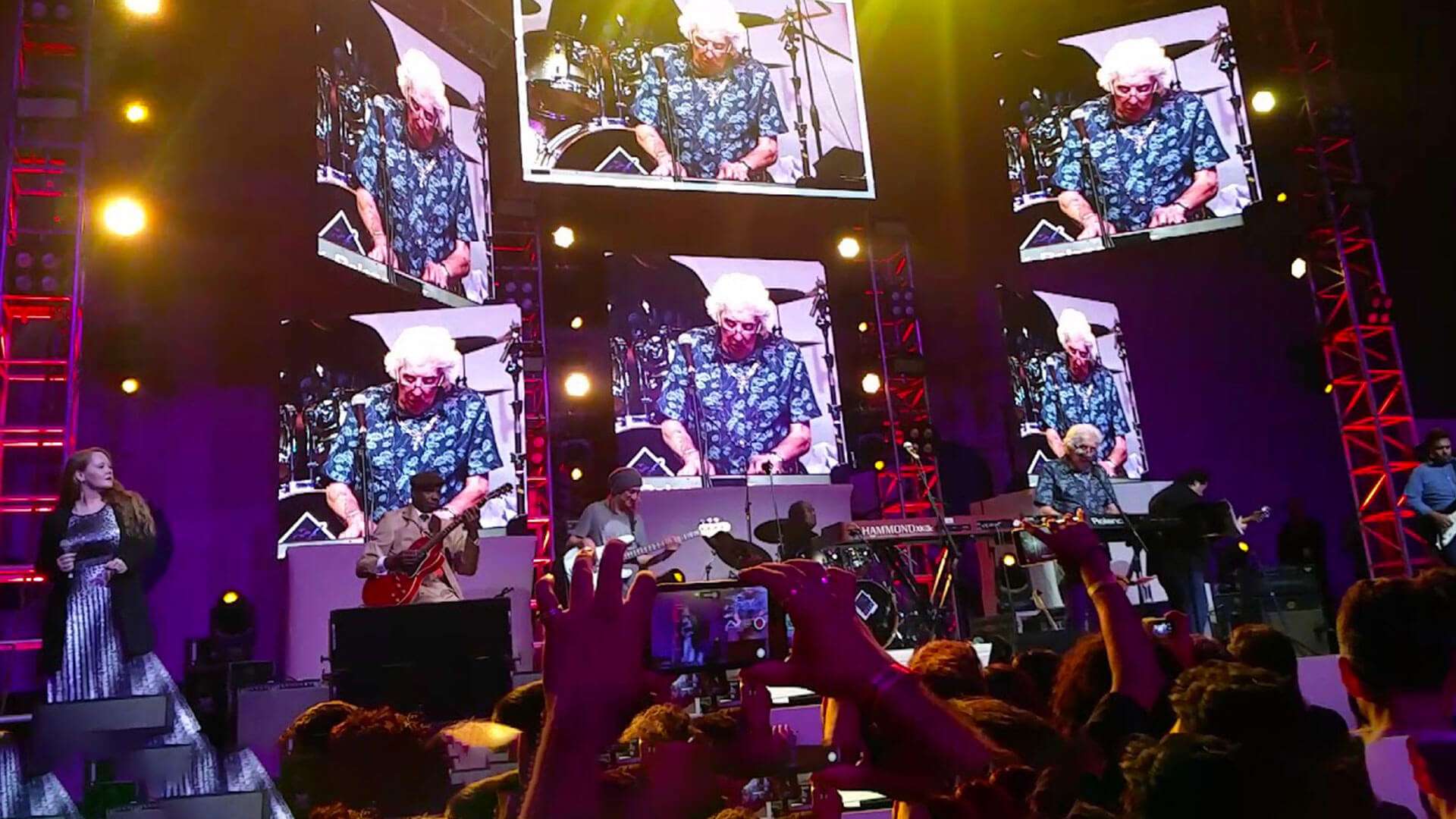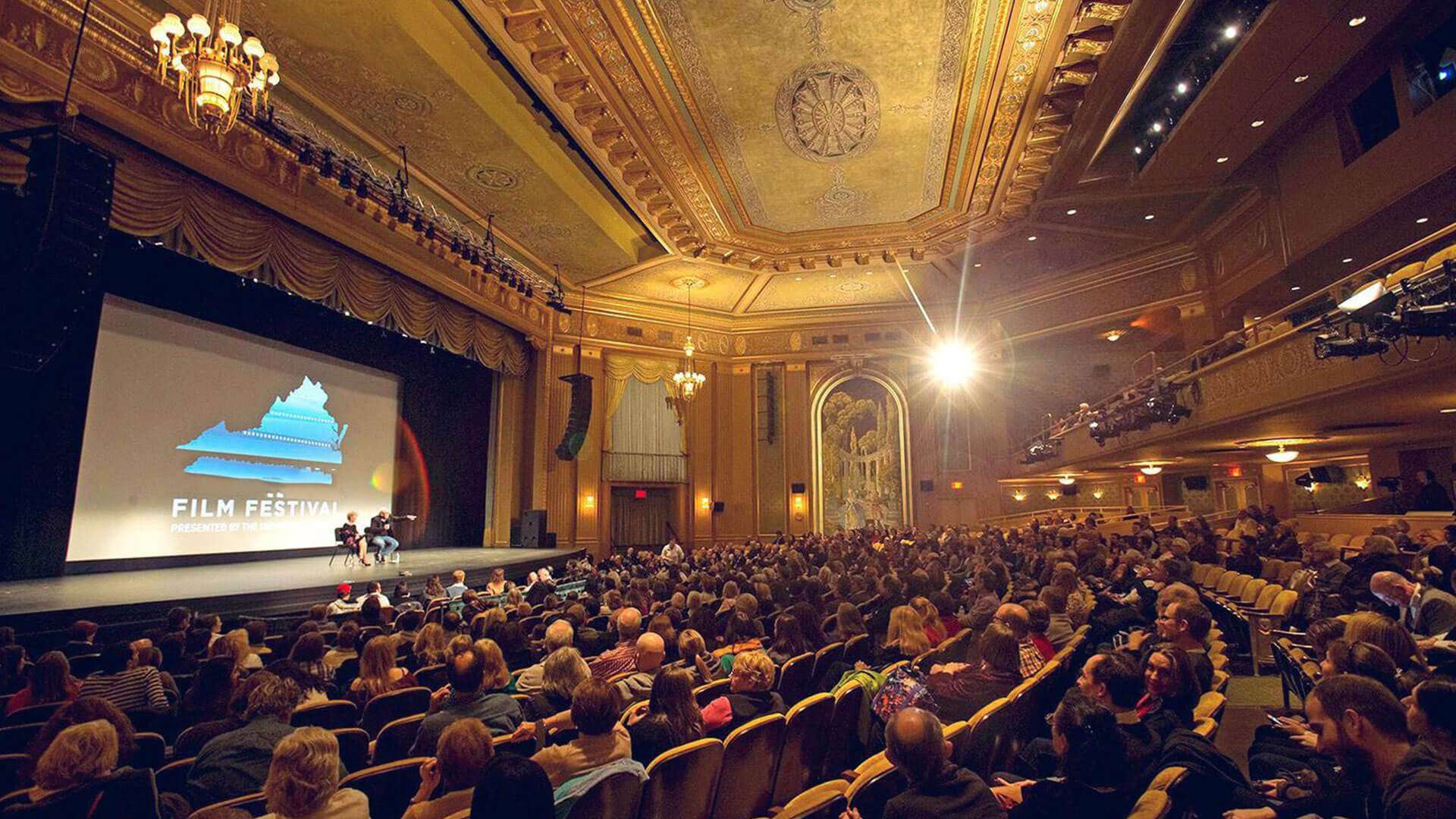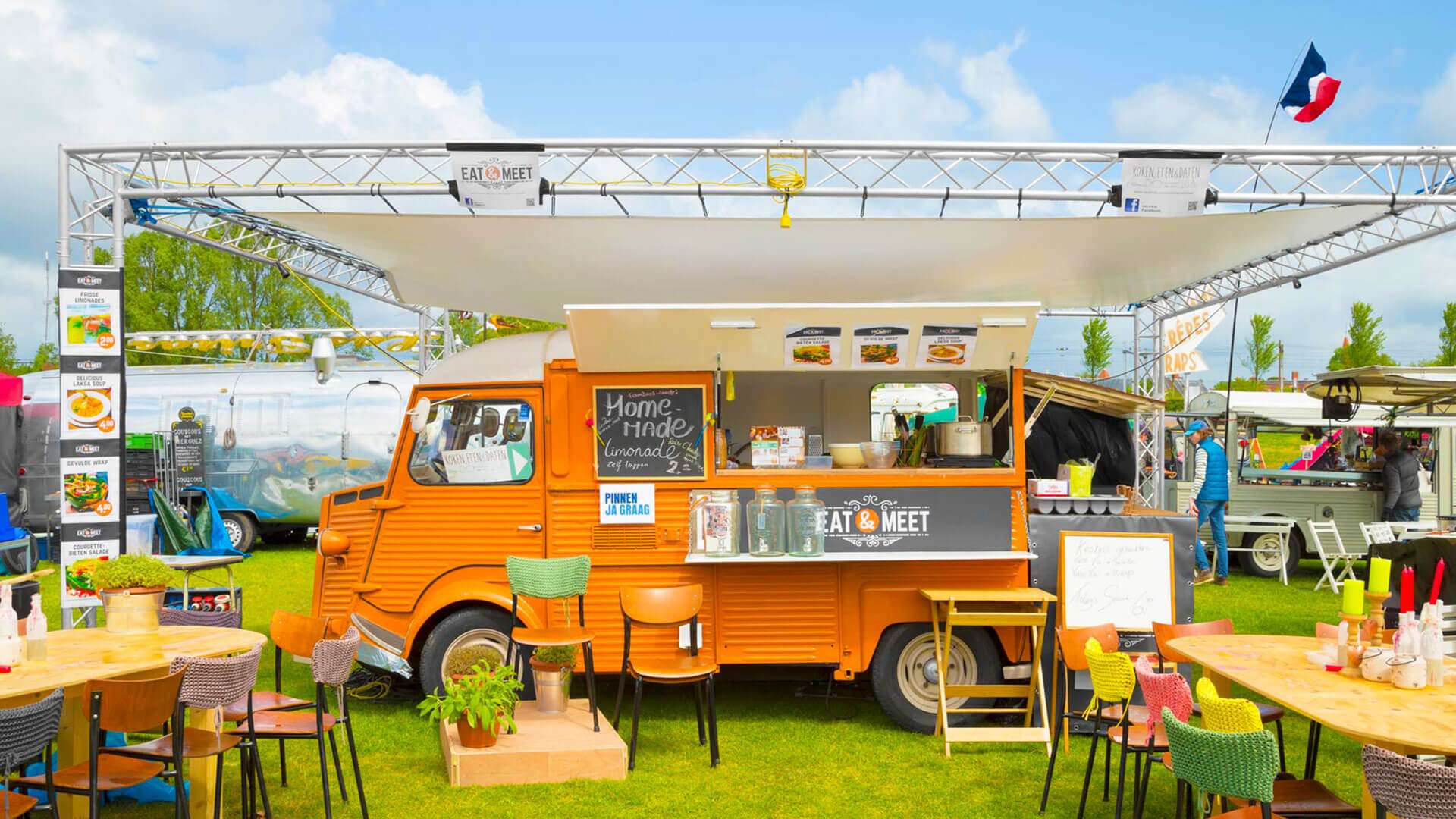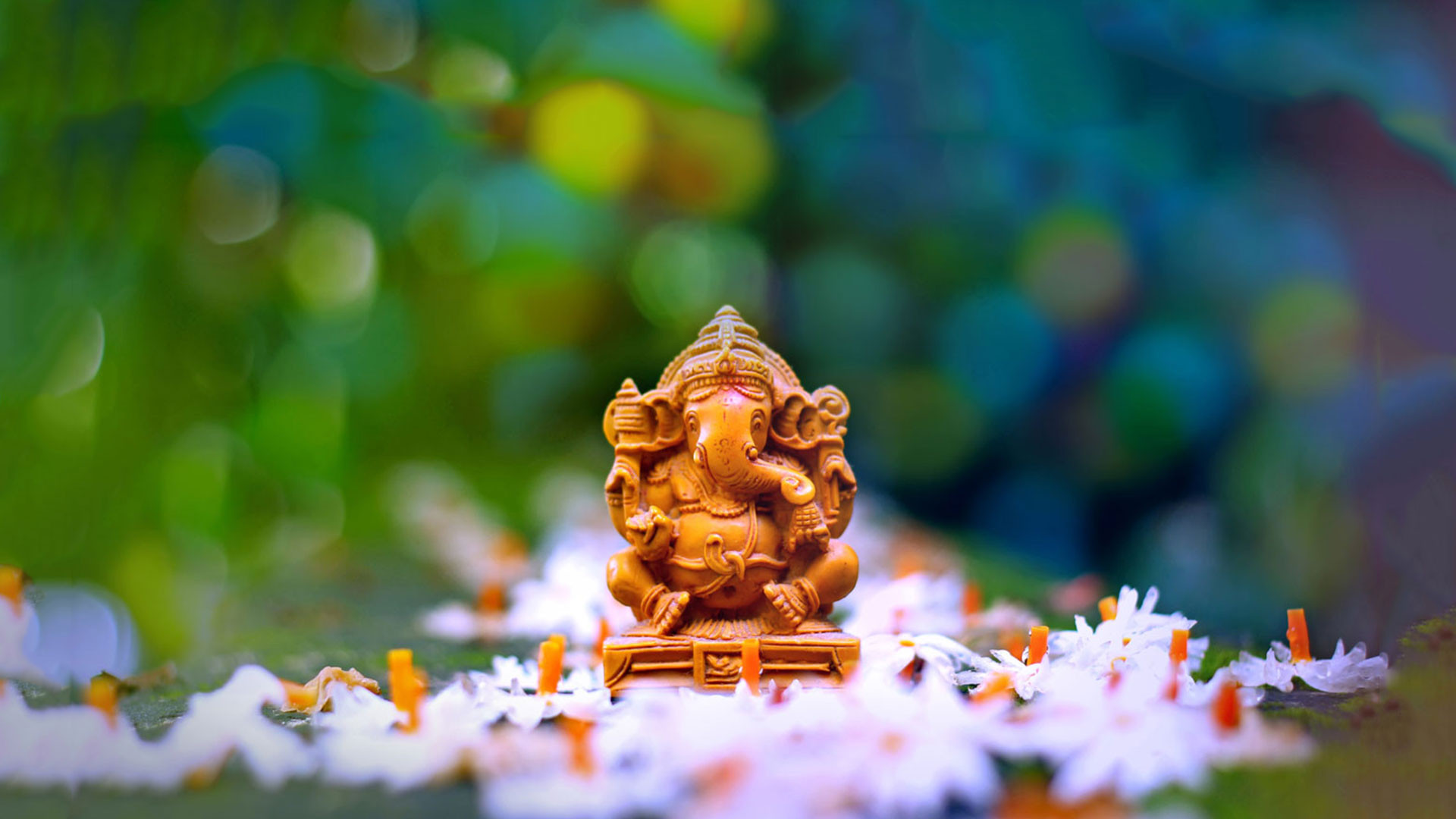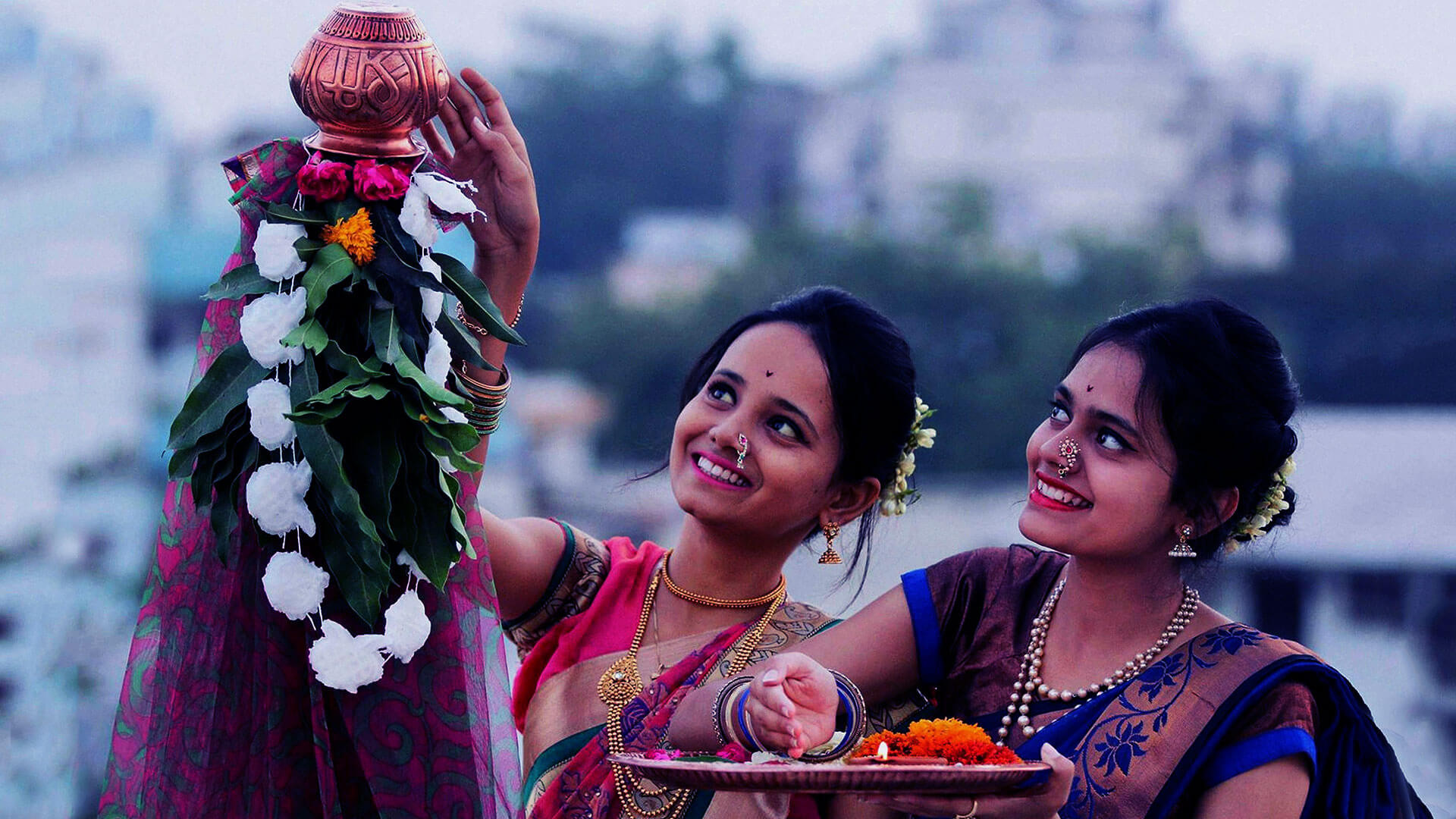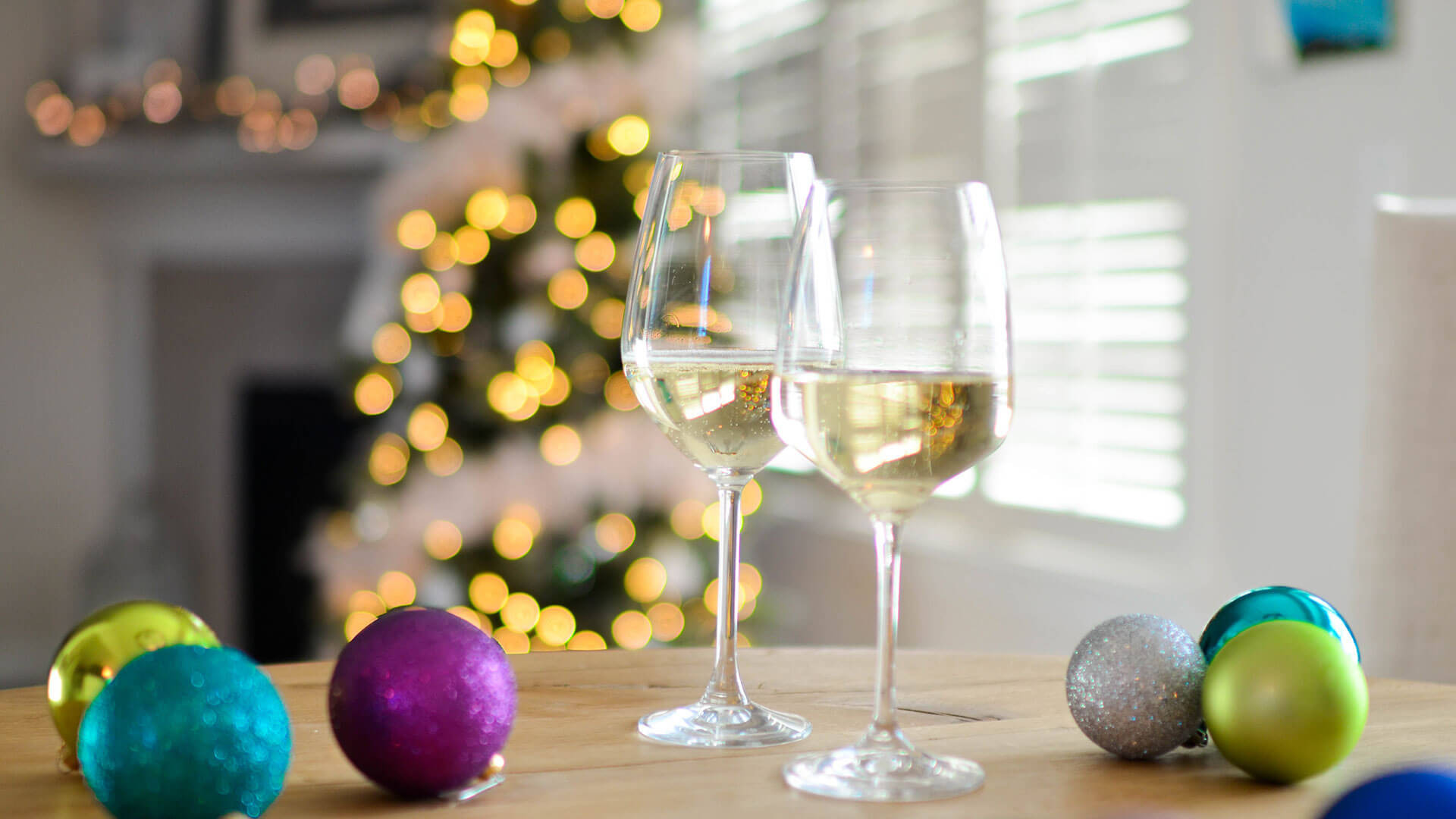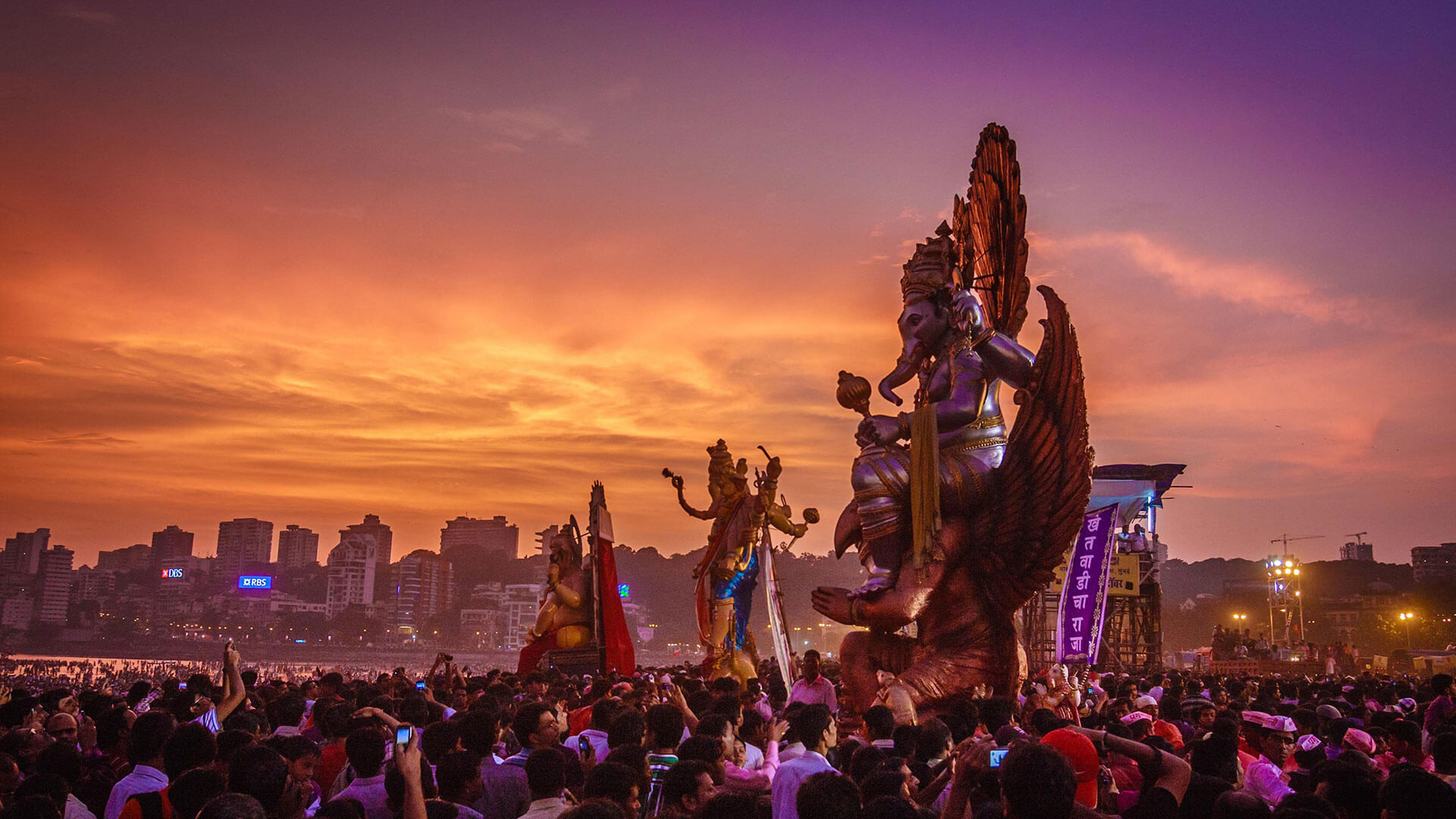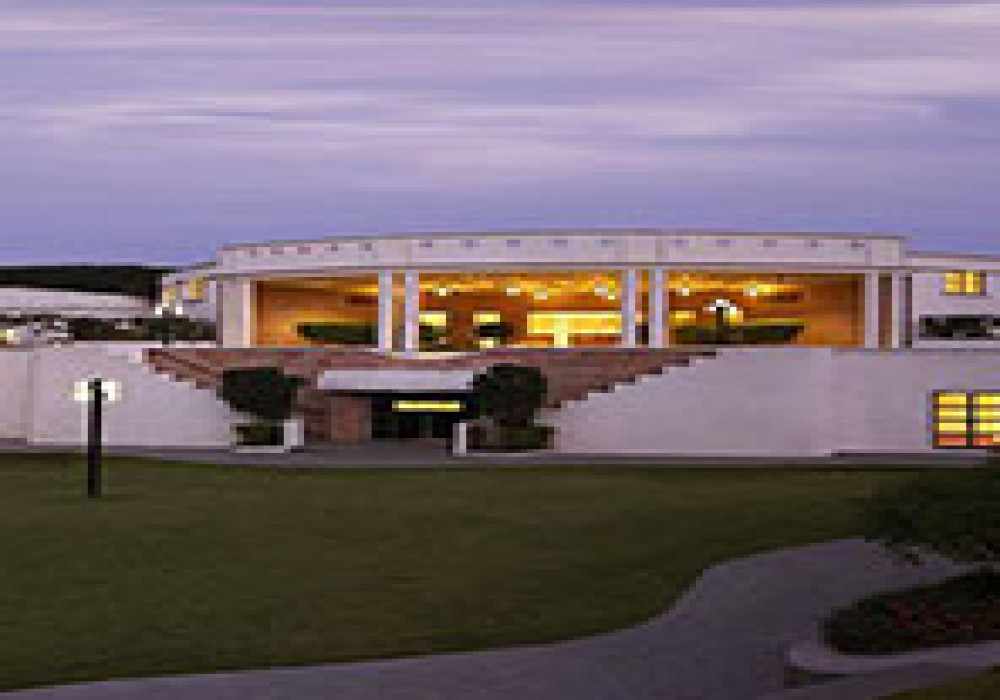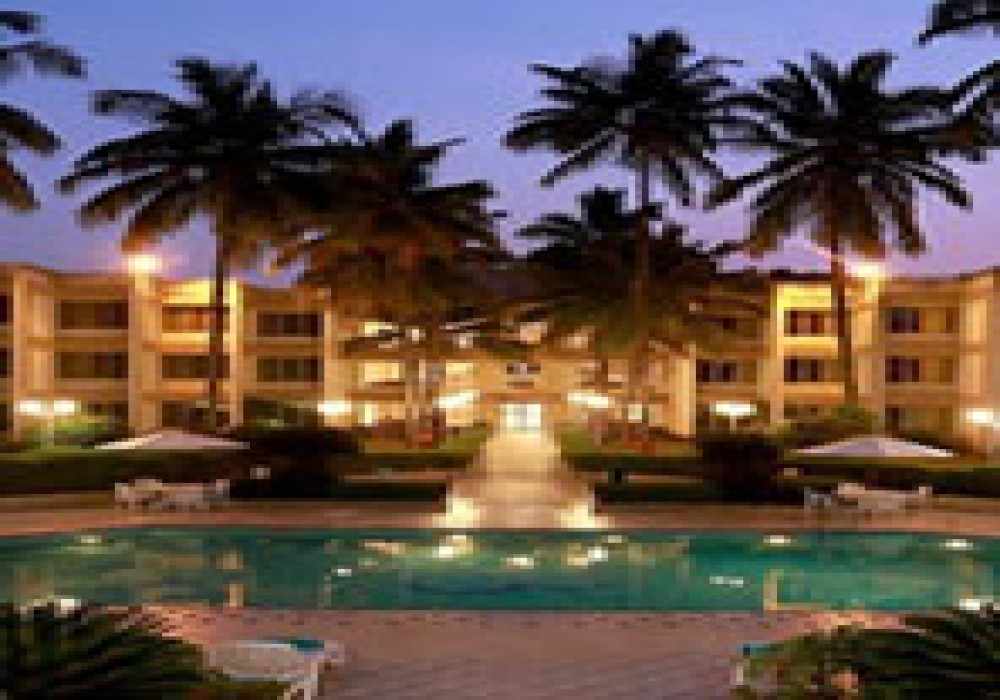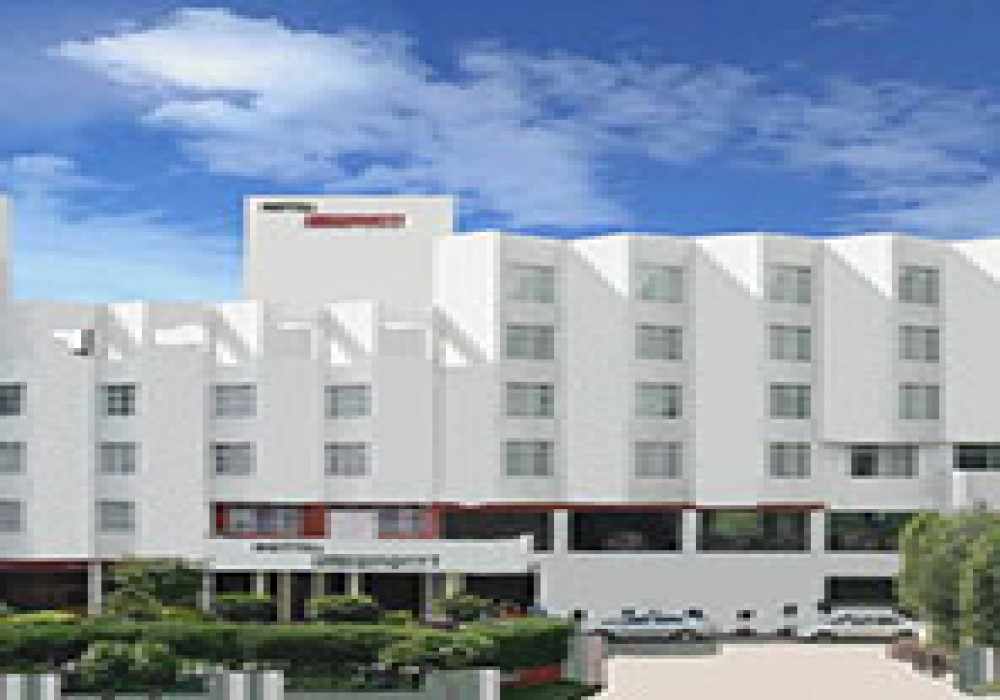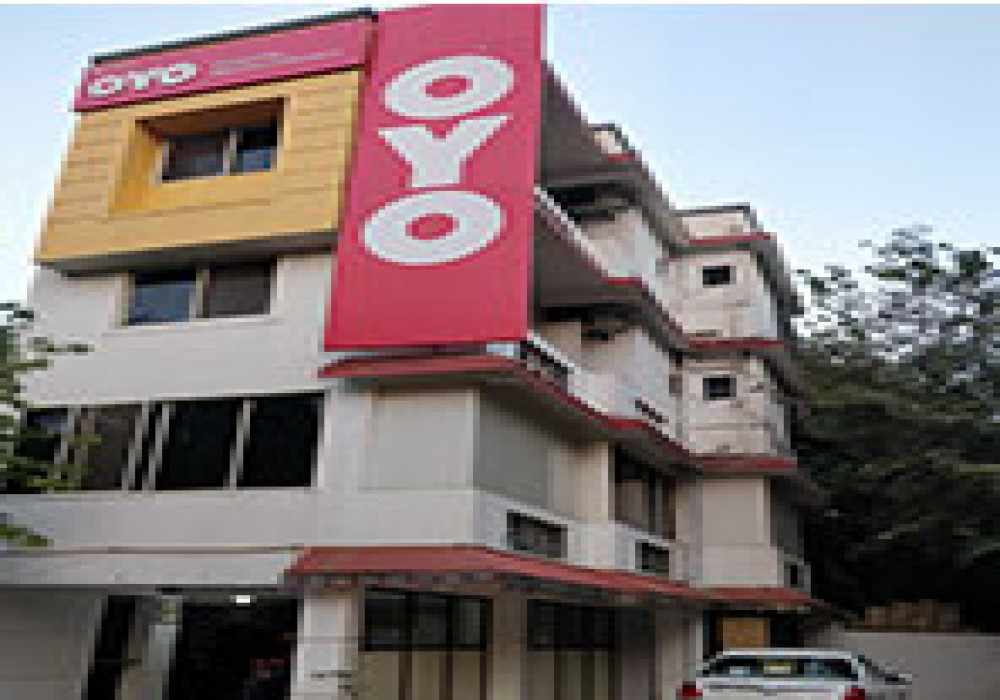Maharashtra Tour Packages 2025
Cities in Maharashtra
Best Destinations in Maharashtra
Maharashtra – The Land of Forts and Festivals
Maharashtra is a land of diverse landscapes, rich heritage, and breathtaking beauty. It holds immense significance as India’s economic powerhouse, cultural hub, and historical treasure trove. Home to Mumbai, the financial capital, it drives the nation’s commerce and entertainment industries. Maharashtra has a rich legacy of Maratha valor, with forts like Raigad and Shivneri standing as symbols of its glorious past.
From the serene beaches of Konkan to the majestic Sahyadri hills, every corner of the state is a visual delight. The Ajanta and Ellora Caves, with their fascinating carvings whisper epic tales of history, while the lush greenery of Matheran and Mahabaleshwar offers a serene escape.
Read on to know more about this beautiful state!
Maharashtra, the wealthiest state in India, is the third-largest in terms of size and the second-largest in population. It is located in the western region of the country, occupying a significant portion of the Deccan Plateau. Known for its rich history and diverse culture, Maharashtra is also home to Mumbai, the state capital and the financial powerhouse of India. Mumbai is often referred to as the "City of Dreams" and serves as a hub for trade, finance, entertainment, and industry. The state’s strategic coastal location has long made it a centre for commercial activities, with historical towns like Satara playing key roles in trade.
Historically, Maharashtra has a deep cultural significance. The state is believed to have once been known as Dandakaranya, a reference to its ancient epic past. The name 'Maharashtra' itself was first documented by the Chinese traveller Huen Tsang in the 7th century. Over the years, Maharashtra has continued to thrive economically and culturally, blending its rich traditions with modern advancements. From its iconic forts and temples to its bustling urban cities, Maharashtra offers a unique glimpse into India's past, present, and future. Keep reading this article to discover more fascinating details about Maharashtra's vibrant heritage and growth.
Historical Significance of Maharashtra
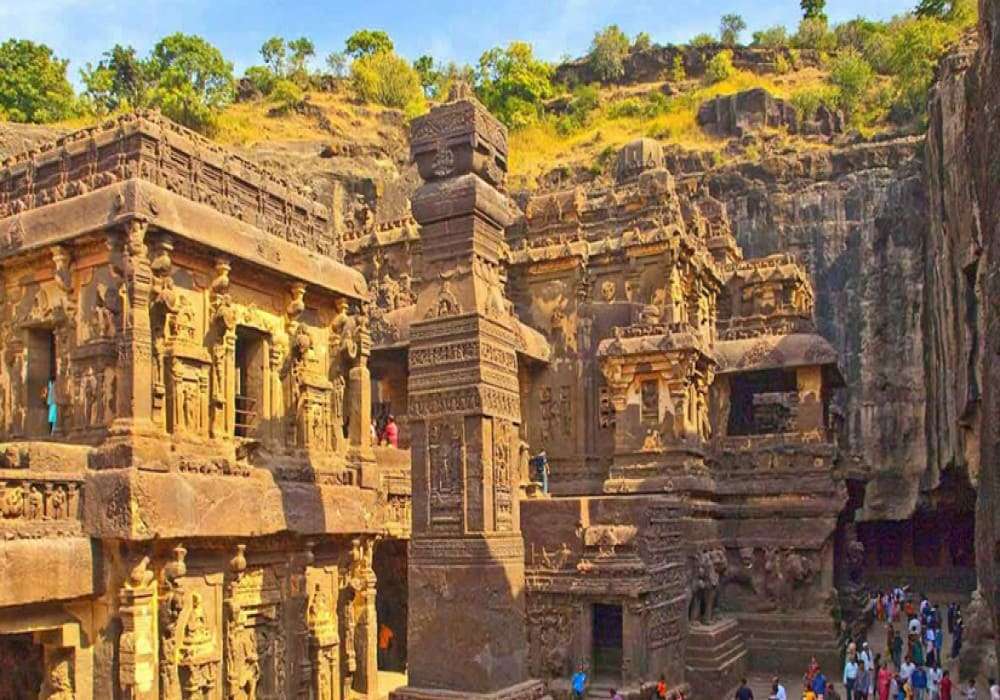
Archaeological findings trace Maharashtra’s history back to the 3rd century BC, with evidence from Daimabad, an ancient site in Ahmednagar linking it to the Harappan civilisation. Over the centuries, the region was ruled by several Hindu dynasties, including the Vakatakas, Rashtrakutas, Chalukyas, and Yadavas, who governed the Marathwada and Vidarbha regions.
However, in 1296 AD, Ala-ud-din Khalji invaded the Deccan, overthrowing the Yadavas followed by the Tughlaq dynasty, which ruled until 1347 AD, expanding its empire to Madurai. The Bahmani Sultanate of Bijapur then took over, ruling for 150 years before the rise of the Maratha Empire under the legendary Chhatrapati Shivaji in 1674.
Following Shivaji’s passing in 1680, his sons Shambhaji and Rajaram carried forward his legacy. By 1712, the Peshwas took control ushering in a golden era that lasted until the Anglo-Maratha wars, which led to British dominance in 1804. Maharashtra was governed under the Bombay Presidency from 1848 to 1853 covering much of the northern Deccan. After India’s independence in 1947, the state underwent major political restructuring. The Bombay Reorganisation Act of 1960 marked a defining moment in Maharashtra’s history leading to the formation of the modern state as we know it today.
Climate of Maharashtra
Maharashtra experiences a diverse climate due to its vast geographical expanse. The state primarily has a tropical monsoon climate, with three distinct seasons: summer, monsoon, and winter.
- Summers, from March to May, are hot and dry, with temperatures often exceeding 40°C in inland regions.
- The monsoon season (June to September) brings heavy rainfall, especially in the Western Ghats, making the landscape lush and green.
- Winters, from November to February, are mild and pleasant, with temperatures ranging from 10°C to 25°C.
Coastal areas like Mumbai and Konkan remain humid year-round, while Vidarbha and Marathwada experience more extreme temperatures.
Culture and Tradition of Maharashtra
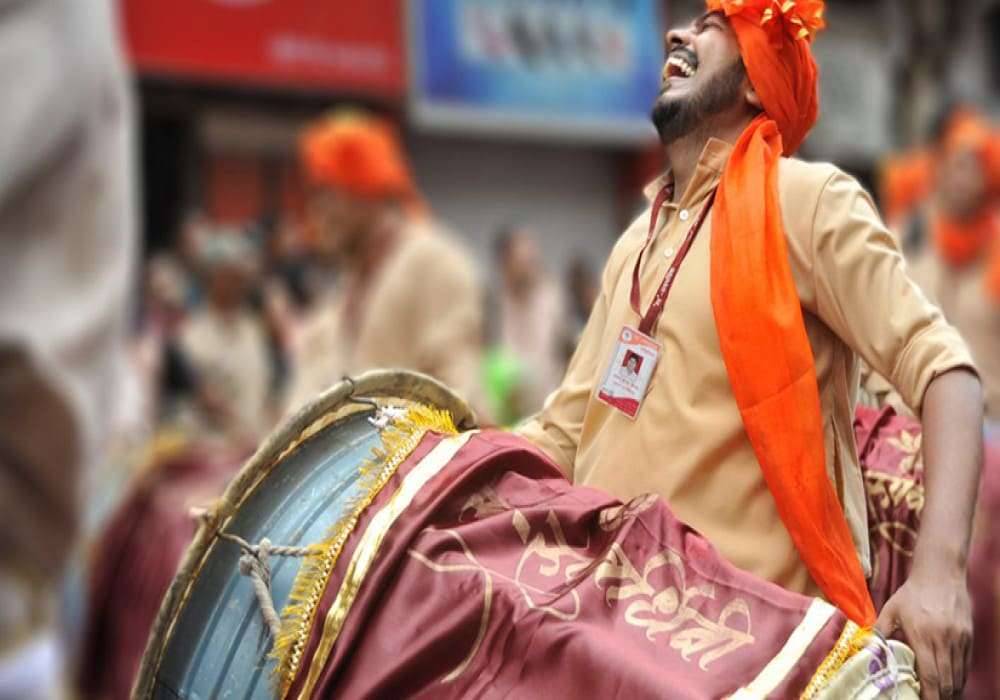
The legacy of the Maratha rulers continues to shine through Maharashtra’s rich cultural heritage, marked by grandeur and vitality. The state thrives as a harmonious blend of diverse traditions, where each region boasts its own unique dialects, folk songs, cuisine, and ethnic influences. Maharashtra is a melting pot of cultures, home to vibrant communities like Waghya Murali, Potraj, Vasudev, and Gondhali, who preserve their artistic traditions.
A land of inclusivity, Maharashtra welcomes Hindus, Muslims, Christians, Jews, Buddhists, Zoroastrians, and Sikhs, while the tribal communities of Bhils, Mahadeo, Kolis, Gonds, and Warlis uphold their rich customs. Despite Hindus making up 83% of the population, the state remains deeply secular, embracing diversity with respect and inclusivity.
The people of Maharashtra are known for their warmth and hospitality, welcoming outsiders with gratitude. While Marathi is the regional language, Maharashtra is one of India’s most linguistically diverse states, with 38 other languages spoken by Adivasis, tribals, and nomadic communities. The state’s cultural vibrancy and rich traditions make it a fascinating place to explore!
Art and Handicraft of Maharashtra
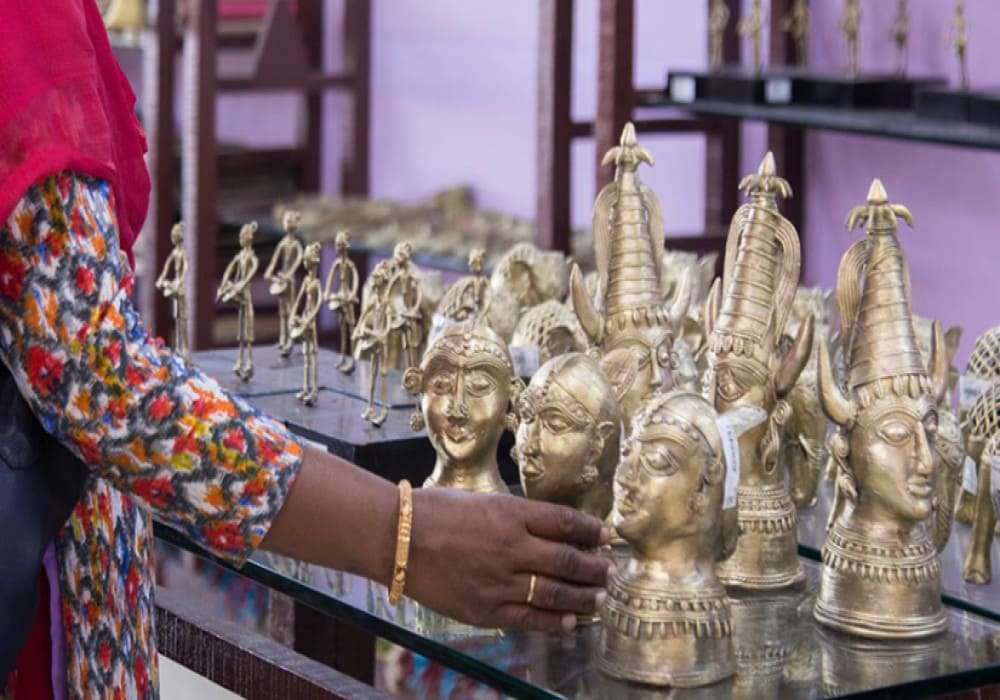
Maharashtra is one of the leading cotton-producing states in the country, and its rich culture and heritage are rooted in myriad traditions and art forms that have been preserved over the centuries. Once used to make clothes for nobles, Mashru and Himroo fabrics owe the opulence to the use of gold and silver threads for weaving that has originated from the Aurangabad district in the Marathwada region. Sawantwadi crafts are lacquer crafts used to craft lacquered furniture and light fittings, which are famous in the international market. Paithani pure silk woven sarees are expensive and worn at marriages and festivals. Narayan Peth saris, woven from cotton and silk, have been a part of Maharashtra’s culture since 200 BCE. Warli, a tribal art form, are mural paintings from 2000 BCE. Bidri ware is an ancient craft from Aurangabad that involves intricate workmanship of pure silver. Kolhapuri chappals are famous handmade slippers made of buffalo hide. Traditional jewellery - Kolhapuri Saaj (a necklace) and Nath (a nose ring) are made of pure gold and were worn by the royals of the Maratha and Peshwa kingdoms. Vivacious folk and traditional dance forms and music represent the vibrant Marathi culture. Lavani is a traditional dance form, Tamasha is the most popular form of folk theatre, Koli dance is performed by the fishermen community, and Natya Sangeet is 200 years 200-year-old traditional art form of Maharashtra. The state is famous for the Hindi film industry, and it is a land of avant-garde artists.
Beautiful Escapes In Maharashtra
Here are some of the most beautiful and must-visit destinations in Maharashtra for a memorable experience:
- Mahabaleshwar : A stunning hill station with lush valleys, waterfalls, and strawberry farms.
- Lonavala & Khandala: Twin hill stations known for misty hills, scenic treks, and monsoon magic.
- Bhandardara: A peaceful retreat with lakes, waterfalls, and starry skies.
- Igatpuri: A nature lover’s delight with waterfalls and trekking trails.
- Panchgani: A tranquil getaway surrounded by five scenic hills.
- Chikhaldara: Maharashtra’s only coffee-growing region with mesmerizing landscapes.
- Ganpatipule: A picturesque coastal town with pristine beaches and spiritual vibes.
Romantic Escapes in Maharashtra
Maharashtra boasts several paradisiacal places! Below si the list of not-to-be-missed romantic getaways in Maharashtra:
- Mahabaleshwar: A dreamy hill station with misty valleys, serene lakes, and strawberry farms, perfect for a romantic retreat.
- Lonavala & Khandala: A charming escape with lush green landscapes, cascading waterfalls, and cozy resorts.
- Alibaug: A coastal paradise with pristine beaches, luxurious villas, and mesmerizing sunsets.
- Matheran: A peaceful, car-free hill station with stunning viewpoints and horse-drawn carriage rides.
- Tarkarli: A beachside haven with crystal-clear waters, scuba diving adventures, and romantic houseboat stays.
Top Free Things To Do in Maharashtra
Explore Marine Drive, Mumbai: Take a romantic stroll along the Queen’s Necklace and enjoy the sea breeze.
- Visit Gateway of India: Admire this historic monument and soak in the bustling atmosphere.
- Hike to Sinhagad Fort, Pune: Enjoy breathtaking views and delve into history without spending a penny.
- Wander Through Elephanta Caves (Free on Certain Days): Marvel at the ancient rock-cut sculptures.
- Relax at Juhu Beach, Mumbai: Watch the sunset and experience Mumbai’s lively beach culture.
- Trek to Rajmachi Fort: A scenic adventure through lush greenery and historic ruins.
Read More : Things To Do In Maharashtra
Why to Visit Maharashtra?
Maharashtra is a treasure trove for travellers, offering a perfect blend of adventure, heritage, and scenic beauty. Whether it's exploring the bustling metropolis of Mumbai, trekking the rugged forts of Sahyadris, or unwinding on the untouched beaches of Konkan, the state has something for everyone. Wildlife enthusiasts can experience a great adrenaline rush on thrilling safaris in Tadoba and Pench, while culture seeker can witness Pune’s rich traditions. The state's well-connected infrastructure and evolving tourism industry also present exciting opportunities for eco-tourism, adventure sports, and heritage trails, making Maharashtra a must-visit destination for curious explorers and seasoned travellers alike.
When to Visit Maharashtra?
The best time to visit Maharashtra is from October to March when the weather is pleasant and ideal for sightseeing, beach outings, and trekking. The monsoon season (June to September) transforms the Western Ghats into a lush paradise, perfect for nature lovers. Summer (April to May) can be hot, but hill stations like Mahabaleshwar offer a cool escape.
How to Reach Maharashtra
Maharashtra, India's largest state, has multiple airbases, railway networks, road networks, and seaports. You can choose one of the transport modes or a combination of both at your convenience. Below is the comprehensive guide on how to reach Maharashtra:
By Air:
Maharashtra features 30 operational airports, making it the state with the highest number of airports in India. The major airports include
- Chhatrapati Shivaji Maharaj International Airport in Mumbai
- Pune International Airport in Pune
- Dr Babasaheb Ambedkar International Airport in Nagpur.
You can choose the airport depending on your destination and book a cab or hire a taxi upon arrival for further travel.
By Train:
Maharashtra is the largest state of India and has over 1200 operational railway stations. The main railway stations include:
- Chhatrapati Shivaji Maharaj Terminus
- Mumbai Central
- Dadar
- Nagpur Junction
- Lokmanya Tilak Terminus
- Thane
- Pune Junction
- Kalyan Junction
- Solapur Junction
- Nashik Road
You can select the railway stations or a combination according to your end destination. Upon arrival, you can hire a taxi or book a cab for further travel.
By Road:
Maharashtra is well-connected with several National Highways linked with major cities and regions in India.
National Highways in Maharashtra connecting cities within the state:
- NH 48 Connecting Mumbai to Pune
- NH 61 Connecting Mumbai to Nashik
National Highways in Maharashtra connecting with major cities in India:
- NH 53 Connecting Nagpur with Surat
- NH 66 Connecting Mumbai with Goa
- NH 48 Connecting Mumbai with Delhi via Nashik, Dhule, and Indore
- NH 65 Connecting Pune with Hyderabad via Solapur
- NH 48 Connecting Mumbai with Punjab via Nashik, Dhule, Indore, Jaipur, Delhi, Ambala, and Jalandhar
- NH 48 Connecting Mumbai with Bangalore via Pune, Satara, Kolhapur, Belgaum, and Hubli
By Water:
Maharashtra is a coastal state featuring several seaports to facilitate water transportation. You can reach via cruise ships, ferries, and inland waterways. The major seaports in Maharashtra include Mumbai Port, Jawaharlal Nehru Port, and Mormugao Port.
A culturally vibrant state basking in the glory of rich history, Maharashtra is the pride of India. The Deccan Queen is a special train that winds its way through the jagged hills and verdant countryside of Maharashtra, making it one of the most enthralling experiences one can ever enjoy while in India. Some of the most alluring tourist destinations in Maharashtra such as Marine Drive in Mumbai, Shanivar Vada in Pune, Ajanta-Ellora Caves in Aurangabad, Lonar Lake, Matheran, The Elephanta Caves, Khandala, Lonavala, and many more are famous all over the world.
Why wait any further? Let us get on an exciting journey to explore this culturally-rich state to the depths! Book now with adotrip.com and experience services like no other!
With us, nothing far!
Read More : Tourist Places In Maharashtra
Frequently Asked Questions About Maharashtra
Ques 1. What is special about Maharashtra?
Ans 1. Maharashtra is the 3rd largest and most populated state in India with a delightful blend of various religions.
Ques 2. What is Maharashtra known as?
Ans 2. Maharashtra is known as the Gateway of India. This state played a very crucial role in the country’s social and political life.
Ques 3. What is Maharashtra culture?
Ans 3. Maharashtra culture is a vibrant blend of traditional customs, art forms, delicious cuisine, and festivals.
Ques 4. What is the main festival of Maharashtra?
Ans 4. Ganesh Chaturthi is the main festival of Maharashtra celebrated with immense passion and fervour.
Ques 5. Which is the best time to visit Maharashtra?
Ans 5. The best time to visit Maharashtra is during the winter months: From October to February.

